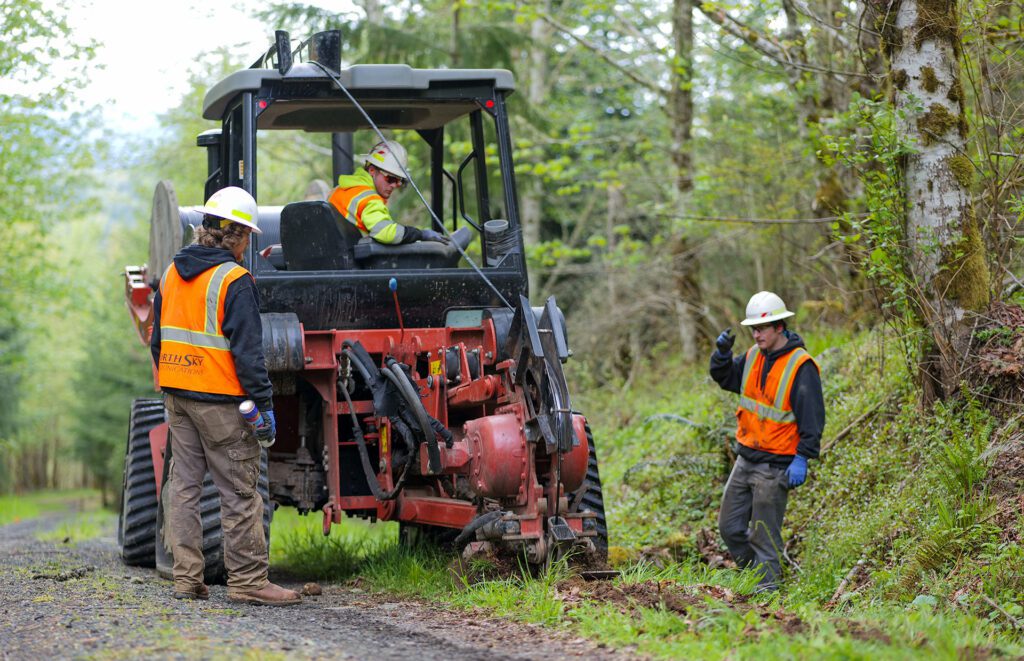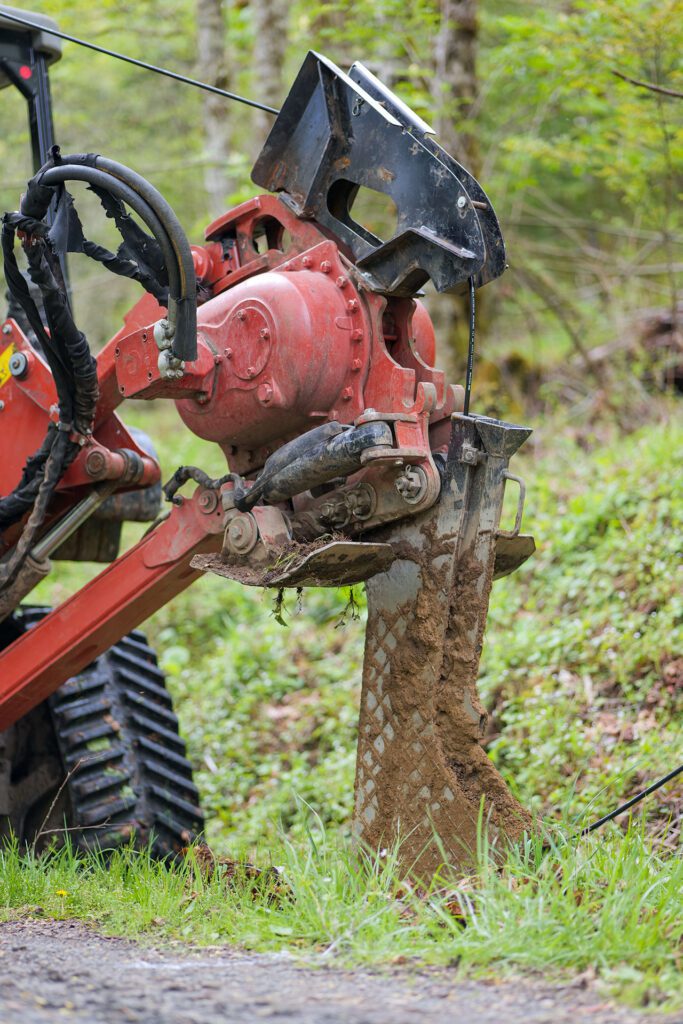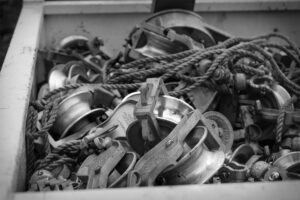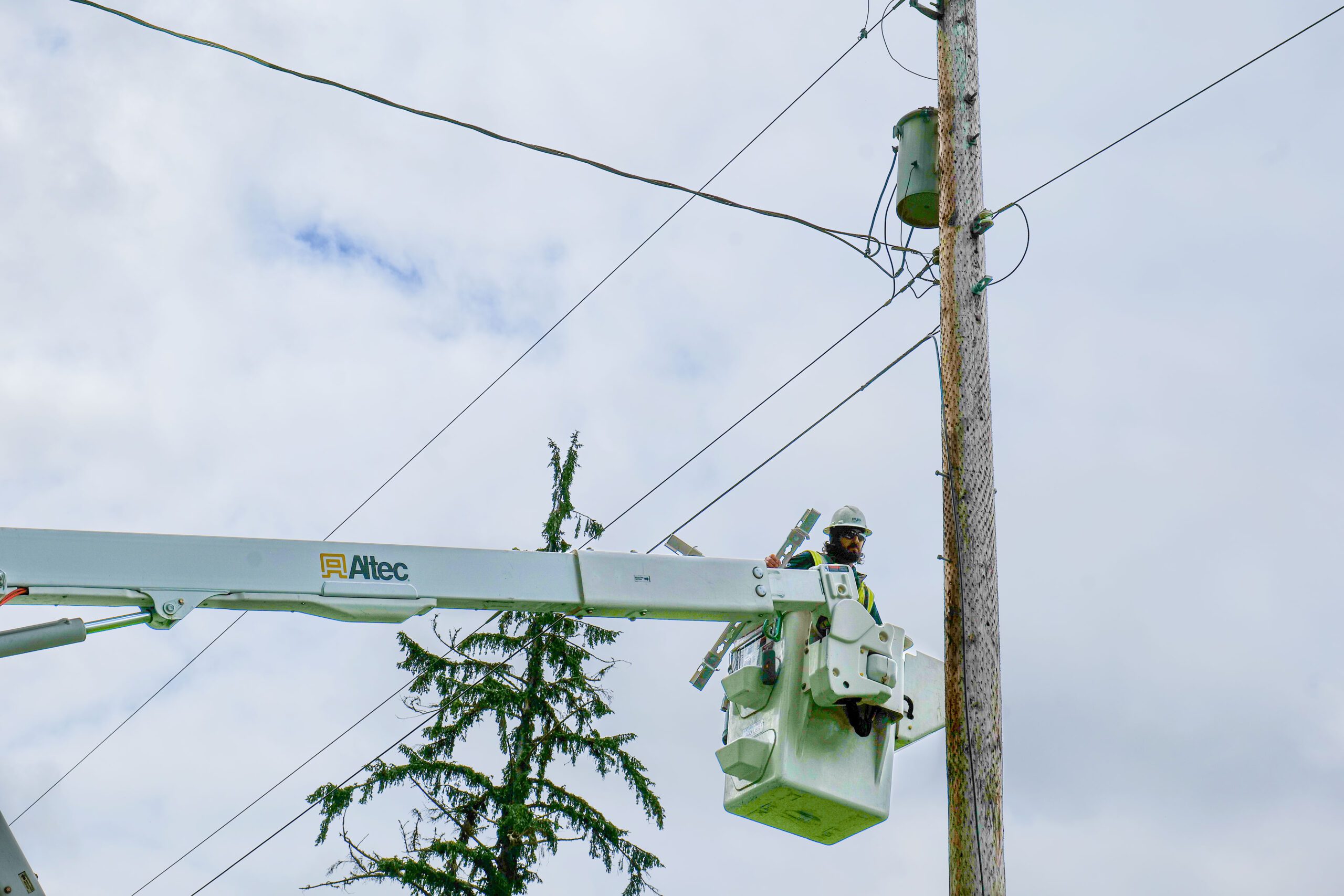Above or Below, Fiber Crews are on the Go
There’s been a rumble in the hills and valleys bordering the eastern flank of the Olympic National Forest for the last few months. And that rumble represents progress!

It all starts with simple paint markings showing the path. Red paint on the road indicates electric service; orange is for phone or cable; and water is blue. White paint marks route where the new fiber goes in.
The rumble comes as fiber construction equipment arrives in the form of small and large tractors, trucks, crawlers, and excavators. But mostly, the rumble comes from the vibratory plow. The plow is a specially modified tractor (see picture at top). The business end of the plow features a rudder-like device which vibrates into the earth, carving a narrow channel approx 3ft deep.

As the plow shakes, the fiber line is channeled from a large spool into the plow blade and deposited under the ground. Only a narrow groove is left to fill, with minimal disturbance. Machine scale varies–along roadsways, the plows are larger, but the plows bringing fiber from the road to the side of homes are often much smaller. The end result is the same.
As of late-June, high speed fiber optic cable capable of delivering 10-gigabit internet now runs beneath and alongside roads at the northern base of Mt. Walker, on Penny Creek Rd and Cougar Run.
Fiber climbs the hills behind Quilcene up Pete Beck Rd, Shady Lane, Wildwood, Elkhorn, Ripley Creek and Snow Creek. Fiber runs towards Lords Lake and around Lake Leland, and out towards Rice and Crocker Lakes. Fiber has been built in and along roads leading to Peterson, Sandy Shore, Beausite, and Gibbs Lake.
PUD fiber now covers the Bolton Peninsula from McDonald and Rose Point Roads at the bottom of the Peninsula and connects homes on both its east and west shores to Quilcene Bay and Dabob Bay, and up and along Tarboo Bay.
Fiber Overhead
PUD line crew have been instrumental in the speedy expansion of fiber across the south- and mid-county area, often running 1 mile of main line fiber per day.
Fiber may look similar from ground level, but inside the thick black coating are dozens and even hundreds of strands of hair-thin fiber. To place the mainline, crews connect heavy-duty pulleys to the poles and run a continuous
1-mile rope the full length of the run. The rope is connected to the fiber using a device very similar to a child’s toy finger trap–when tension is applied, the cable is gripped and pulled through. On the far end, line crew engage a truck mounted winch and the line begins its journey. Line staff follow the rope-cable connection to the end to ensure it safely passes through each pulley.
Once complete, the crew create loops of fiber, which are secured to the poles or mid-span. These loops can be unravelled in the future for crews to drop the main line fiber to the ground for repair.
PUD crews have run nearly 50 miles of main line fiber in this fashion, with buildout spanning the Highway 101 corridor, arriving

on the western shores of Discovery Bay and throughout the Gardiner area later this summer and fall. The project should be completed by year’s end.
Fiber Mapping
Fiber construction is happening all over south and mid-county, and you can view the PUD’s fiber progress on our fiber map here.
